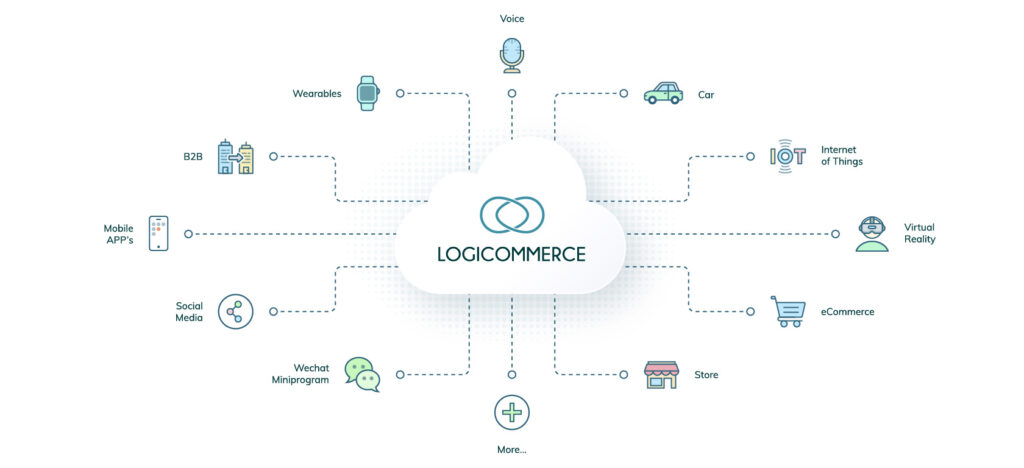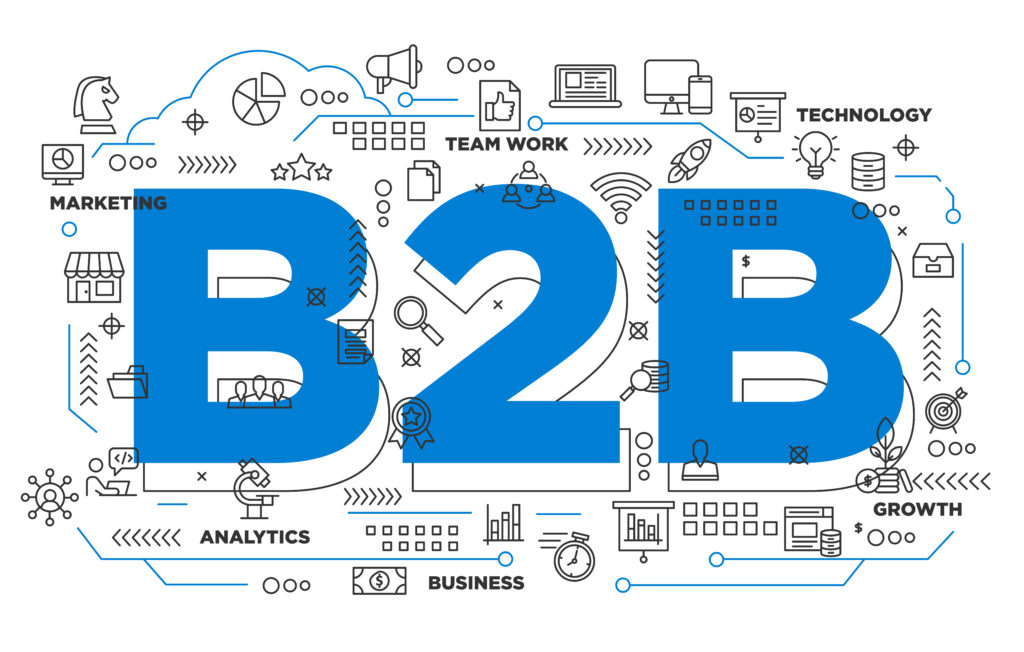LogiCommerce is trusted by global enterprise brands and wholesalers, across industries
eCommerce trends change almost every year as technology advances. The eCommerce industry is constantly evolving and it is necessary for companies to be aware of the latest trends to stay competitive in the global market.
Understanding these trends, allows you to take advantage of new opportunities and create more effective strategies to increase your digital sales and achieve a successful year.
At LogiCommerce, we have prepared this article on what we believe will be the top 12 trends for this new year. Are you ready?
Contents
It was one of the trends we already foresaw in 2022 and will undoubtedly keep growing in 2023. It is a revolution in the eCommerce sector and the key for those companies that want to adapt emerging trends while achieving greater flexibility and freedom in terms of customization and development. If you would like to know more about this concept, we recommend you to click here and read our detailed guide on Headless architecture.
At LogiCommerce we believe that everyone should have the opportunity to create their own online store with cutting-edge technology and advanced functionalities. That is why we are democratizing Headless eCommerce platforms by offering a more intuitive, interactive and powerful solution at a very competitive price.

There is a great migration trend for those online stores that previously had an Open-Source platform and now want and need to evolve towards a SaaS one. The reason is clear; with a SaaS platform, the technical debt is reduced and companies do not have to worry about aspects such as security, updates, maintenance, performance or technical support. Everything is handled by the SaaS provider.
Definitely, a SaaS solution will avoid many headaches and will allow you to focus your efforts on those areas of greatest value for your business.
Online retailers are already successfully using artificial intelligence to offer consumers a more personalized shopping experience. By using predictive search algorithms, e-retailers can more accurately suggest recommended products and items that match consumers' interests and preferences.
Artificial Intelligence (AI) was designed to create an easy and intuitive user experience so that, for example, customers don't have to waste hours searching through endless options to find the right item. AI is changing the way consumers interact with eCommerce websites, making their shopping experiences more efficient and engaging than ever before.
Augmented reality has enabled greater interaction with customers shopping online, bridging the gap between a physical store and a virtual space. With augmented reality applications, such as 3D mapping, customers can touch, inspect, try on and even preview products before buying them, something that was previously only possible in physical stores. By offering a more interactive and traditional-like shopping experience, it is expected that gradually, retailers will be able to get closer to customers and thereby increase the conversion rate of their online stores.
Personalization has become the big trend for eCommerce stores, and it looks like shoppers are really grateful about it. Consumers have been requesting more personalized experiences for a long time. So, those brands that are now offering tailored shopping, can surely see greater results in terms of conversion and engagement. Thanks to that, consumers can now find highly personalized products, such as customized clothing, shoes or jewelry.
Personalized search is also an essential part of the customer experience. It is a way of showing customers that your brand is concerned with their needs and desires rather than just offering products and/or services. The essence is that when customers look for a product, they get the answers that most closely match their interests based on their behavior. This enables customers to feel recognized and understood, generating loyalty and trust in the brand. Personalizing the search experience will help businesses differentiate themselves from their competitors, attract the attention of new users and potential customers, and create more meaningful relationships with them.
As a result, personalization has benefits not only for the customer, but also for retailers: it allows companies to offer better service, leading to customer loyalty and increased sales opportunities.

Social commerce is revolutionizing the way people shop, allowing users to buy and sell items through their favorite social networks. This channel not only offers direct access to purchase certain products or services, but also provides the unique opportunity for brands to get closer to potential customers by announcing discounts, providing sweepstakes and showing the usability of an item, among others.
In most cases, the device through which these social networks are accessed is the mobile, since it is what everyone has access to from anywhere. That is why it is important to highlight that shopping through mobile devices will continue being a trend in the upcoming years. This factor is closely linked to omnichannel sales, since it is a a strategy that allows brands to be active in different social networks to interact with customers through different channels while offering a unified shopping experience.
Video marketing is an increasingly popular trend for eCommerce sites and it is closely related to the previous point.
The video format allows you to catch the attention of your brand's target audience and keep it active for a longer period of time. It is for this reason that many brands have been creating a profile on social networks such as TikTok or Instagram where they can post short and long videos to, for example, launch a new product, show its usability or demonstrate its benefits in a more direct and transparent way.
It also offers the opportunity to show the most creative side of a brand and take full advantage of the digital world to create a greater interaction with their users. Undoubtedly, this tool will become an essential part of the marketing strategies of any business to convert users into customers.

Podcast marketing is one of the other trends for 2023, which not only has the great potential to increase brand visibility, promote products or services and establish closer relationships with customers, but also provides a special way to engage with users on a more personal level.
Nowadays, there are so many options to reach your target audience, that it is even more important for companies to offer attractive and refreshing content to continue creating a more emotional bond with users and potential customers
One of the most powerful trends that has swept in 2022 and will enter with force in 2023, is Live Shopping, which is basically to present a product through a live broadcast to show how it works, resolve doubts and offer the user a way to buy items instantly.
In this type of online strategies, Influencers marketing has a leading role, since they become a key player to generate greater trust and impact on the audience. This is due to the fact that Influencers' followers have full confidence on them and companies take advantage of this opportunity to be less intrusive, reach a wider audience, and create brand awareness. All in all, live shopping is an effective way of advertising and selling.

This is one of the most recent concepts emerging in the eCommerce sector and is becoming a very attractive purchasing method for users, since, apart from offering great deals, there is a notable concern for the environment.
Re-commerce is the buying and selling of new or slightly used second-hand items over the Internet. This online practice makes possible to find good products with great deals while contributing to the protection of the environment and reducing residues. What many online stores do, is selling products that have been returned by the consumer in good conditions, or even buying products from other sellers to recondition and sell them for a better price. Examples include second-hand clothing and refurbished cell phones, among others.
As awareness of environmentally friendly practices increases, Re-commerce can help us all move towards a more sustainable mindset of affordable and responsible consumption.
This is a new way for online stores from which they can easily adapt to the growing demands of users, who, as a general rule, are becoming more impatient. When they decide to buy something, they usually want it right away. Waiting too long for a product to arrive can make them choose another eCommerce to make their purchases.
Quick commerce, also known as Q-commerce, has emerged in the eCommerce market to change the way products are delivered to consumers. It basically aims to reduce delivery times while maintaining good service and exceptional quality in the shopping experience.
In short, Q-commerce brings together all the advantages of traditional eCommerce and combines them with cutting-edge delivery methods to offer greater comfort with fast delivery times that meet or exceed consumer expectations.
The data clearly points to increased investment in B2B eCommerce. Business-to-business (B2B) eCommerce is growing as technology evolves and drives the way customers interact with brands. In fact, by 2025, Gartner expects that 80% of B2B sales interactions between suppliers and buyers will take place on digital channels.
This is because B2B customers are looking for a more B2C-like experience; simple, intuitive, fast, and without relying on agents or schedules. With eCommerce, B2B businesses can offer more direct, up-to-date and personalized information.
B2B eCommerce platforms provide fast, easy and real-time access to data and updates on inventory, product catalogs and more, so that daily workflows are improved and more accurate since all the information is centralized in one place, which in turn makes it easier to track results and measure KPIs to improve effectiveness.

